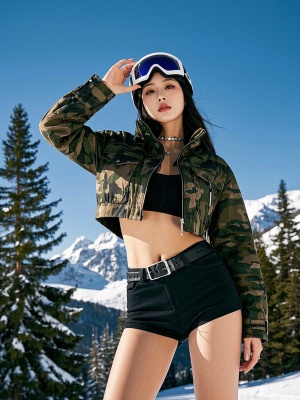Transforming Images into Pop Art: A Comprehensive Guide
Introduction
Pop art has been a dominant force in the art world since the 1950s, characterized by its bold colors, striking contrasts, and playful themes. Today, with advancements in AI and digital tools, transforming ordinary images into pop art has become more accessible than ever. Whether you're an artist, designer, or hobbyist, this guide will walk you through the process of converting images into stunning pop art masterpieces.
The Art of Pop Art: Key Characteristics
Before diving into the transformation process, it's essential to understand what makes pop art unique. Here are some defining features:
- Bold Colors: Pop art often uses vibrant, contrasting colors to create visual impact.
- Simplified Forms: Shapes and outlines are typically simplified or exaggerated.
- Repetition: Patterns and repeated elements are common in pop art.
- Cultural References: Pop art frequently incorporates elements from popular culture, such as celebrities, advertisements, or comic books.
Tools and Techniques for Image to Pop Art Conversion
Traditional Methods
Historically, artists created pop art manually using techniques like screen printing. While this method is still popular among purists, it requires significant skill and time. For those interested in traditional methods, resources like Tate's guide to pop art provide excellent insights.
Digital Tools and AI
Modern technology has revolutionized the way we create pop art. Here are some popular tools:
- Adobe Photoshop: Offers filters and effects to mimic pop art styles.
- AI-Powered Platforms: Websites like MediaAI.Art use AI to transform images into pop art instantly.
- Mobile Apps: Apps like Prisma and PicsArt provide user-friendly pop art filters.
Step-by-Step Guide to Creating Pop Art from Images
Follow these steps to convert your images into pop art:

- Choose the Right Image: High-contrast images with clear subjects work best.
- Simplify the Image: Use tools to reduce details and enhance outlines.
- Apply Bold Colors: Replace natural colors with vibrant, contrasting hues.
- Add Effects: Use halftone patterns or other pop art effects to complete the look.
Applications of Pop Art in Modern Media
Pop art isn't just for galleries—it has practical applications in various fields:

- Marketing: Eye-catching pop art can make advertisements more memorable.
- Social Media: Pop art filters are popular for profile pictures and posts.
- Personal Projects: From wedding photos to pet portraits, pop art adds a unique touch to personal memories.
Conclusion
Transforming images into pop art is a creative and rewarding process, whether you're using traditional methods or cutting-edge AI tools. By understanding the key characteristics of pop art and leveraging the right techniques, anyone can create stunning artworks that stand out. For more inspiration, check out our gallery of pop art transformations.
Ready to start your pop art journey? Explore our AI art guide for more tips and tricks!